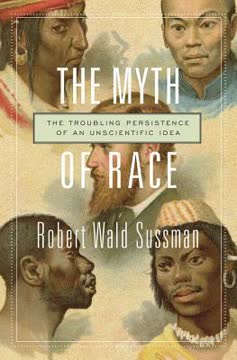Key Takeaways
1. Early Racism Rooted in Power and Justified by Unscientific Theories
For the past 500 years people have been taught how to interpret and understand racism.
Spanish Inquisition. The Spanish Inquisition marked a shift from religious persecution to racial discrimination, introducing the concept of limpieza de sangre ("purity of blood") to exclude converted Jews and Muslims from society. This was a new form of racism, where ethnicity or race, rather than just belief, became a basis for discrimination.
Colonial Justifications. As Europeans colonized the Americas, they needed new rationalizations for mistreating indigenous populations. Two major theories emerged: the pre-Adamite theory, which posited that Native Americans were not descendants of Adam and Eve, and the degeneration theory, which claimed that non-whites were degenerate descendants of Adam and Eve.
Power and Control. These theories served to justify the conquistadores' actions, portraying Native Americans as subhuman and incapable of self-governance. This early form of racism was thus deeply intertwined with economic and political power, setting a precedent for future discriminatory practices.
2. Degeneration Theory: Climate and Lifestyle as Determinants of Racial Hierarchy
It seems that the belief in human races, carry ing along with it the prejudice and hatred of “racism,” is so embedded in our culture and has been an integral part of our worldview for so long that many of us assume that it just must be true.
Biblical Origins. The degeneration theory, unlike the pre-Adamite theory, accepted the biblical account of human origins, positing that all humans descended from Adam and Eve. However, it claimed that non-whites had degenerated from this original state due to factors like climate, lifestyle, or divine action.
Enlightenment Thinkers. Enlightenment figures like Montesquieu, Linnaeus, and Buffon attempted to explain human variation through climate theory, suggesting that environmental factors influenced temperament and customs. However, these differences were not considered hereditary, and proponents of this theory believed that "degenerates" could be remediated through education and Christianization.
Blumenbach's Contribution. Johann Friedrich Blumenbach, considered the father of physical anthropology, classified humans into five varieties, with Caucasians as the ideal and other races as degenerations from this original form. This hierarchical model, though Blumenbach himself was egalitarian, contributed to the development of modern racist paradigms.
3. Pre-Adamite Theory: Separate Creation and Innate Racial Inferiority
Over the past 500 or so years, many intellectuals and their books have created our story of racism.
Challenging Biblical Origins. The pre-Adamite theory, in contrast to the degeneration theory, challenged the biblical account of human origins, suggesting that non-white peoples had a separate, earlier origin and were not descendants of Adam and Eve. This theory implied that non-whites were inherently different and inferior.
La Peyrère's Influence. Isaac La Peyrère's pre-Adamite theory, proposed in the 17th century, argued that millions of people existed before Adam, but that God created Adam and began Jewish history to save mankind. This theory, though controversial, gained traction as scientific findings conflicted with the Bible.
Hume and Kant's Contributions. In the 18th century, David Hume and Immanuel Kant further developed the pre-Adamite theory, arguing for the separate creation and innate inferiority of non-white peoples. Kant, in particular, created a racist anthropology based on skin color, linking intellectual ability and moral capacity to race.
4. Eugenics Emerges: Debunking Lamarck and Embracing Biological Determinism
The abandonment of the belief in acquired characters was the stimulus for the eugenics movement.
Lamarck's Fall. The debunking of Lamarck's theory of acquired characteristics, which posited that organisms could pass on traits acquired during their lifetime, was a crucial turning point. August Weismann's experiments showed that only germ cells, not somatic cells, could transmit traits, discrediting the idea that environment could influence heredity.
Mendelian Genetics. The rediscovery of Mendelian genetics further solidified the belief in biological determinism, suggesting that traits were inherited through discrete units (genes) rather than being shaped by the environment. This led to the rise of eugenics, the belief that human traits could be improved through selective breeding.
Social Darwinism. The combination of Mendelian genetics and Darwin's theory of natural selection gave scientific credence to strict biological determinists. This created a perfect environment for the eugenics movement, which sought to improve the human race by controlling reproduction.
5. American Eugenics: From Shaler's Influence to Davenport's Record Office
The eugenics movement was a direct extension of Social Darwinism.
Shaler's Legacy. Nathaniel Southgate Shaler, a Harvard professor, played a key role in bringing racist theories into the 20th century. Influenced by Gobineau and Nott, Shaler believed in Aryan superiority and the inferiority of African Americans, shaping the views of many influential Harvard graduates.
Davenport's Vision. Charles Davenport, a prominent biologist, established the Eugenics Record Office (ERO) at Cold Spring Harbor in 1910. The ERO, funded by wealthy donors, became the nerve center of the eugenics movement, conducting research, popularizing eugenic ideas, and lobbying for eugenics-related legislation.
Laughlin's Role. Harry Laughlin, superintendent of the ERO, was a relentless worker who pursued Davenport's agenda. The ERO collected vast amounts of data on families, aiming to identify and eliminate "unfit" individuals and promote the breeding of "superior" individuals.
6. The First International Eugenics Congress: A Turning Point
The connections between old theories of polygenism and the eugenics movement, as one might expect, were very strong.
International Gathering. The First International Eugenics Congress, held in London in 1912, brought together leading eugenicists from around the world, including prominent scientists, politicians, and intellectuals. This event marked a turning point, solidifying the legitimacy and widespread acceptance of the eugenics movement.
State Department Support. The U.S. State Department, defying legal restrictions, sent invitations to the congress on official letterhead, signaling the government's approval of the event. This further enhanced the prestige and influence of the eugenics movement.
Media Coverage. The congress received glowing media coverage, with publications like the Journal of the American Medical Association and the New York Times highlighting its importance. This positive publicity helped to normalize eugenic ideas and promote their adoption in public policy.
7. Polygenics and Eugenics Merge: The American School and Gobineau's Influence
By the end of the nineteenth century, the views of Gobineau, as echoed by Shaler, had been “picked up with enthusiasm by William Z. Ripley, and others picked it up from him” (Brace 2005, 161).
American School of Anthropology. The American School, led by Samuel Morton, Josiah Nott, and Louis Agassiz, championed polygenism, arguing for the separate creation and innate inferiority of non-white races. Their views, disseminated through texts like "Types of Mankind," justified slavery and racial discrimination.
Gobineau's Aryan Supremacy. Joseph-Arthur de Gobineau, a French aristocrat, popularized the idea of Aryan supremacy, claiming that the success of civilization depended on the purity of Aryan blood. His "Essay on the Inequality of Human Races" influenced later racist thinkers and contributed to the rise of Nazism.
Chamberlain and Ripley's Influence. Houston Stewart Chamberlain and William Z. Ripley further disseminated Gobineau's ideas, with Chamberlain's "Foundations of the Nineteenth Century" extolling Germanic superiority and Ripley's "The Races of Europe" dividing Europeans into distinct racial groups with varying capabilities. These works shaped racist thought in both Europe and America.
8. The Pioneer Fund: A Bastion of Scientific Racism
In fact, these men were the core of the eugenics movement in Eu ro-pe an and American science.
Draper's Vision. Wickliffe Draper, a wealthy heir, established the Pioneer Fund in 1937 to promote eugenics and racial purity. Draper, influenced by Nazi ideology, sought to use science to justify racial discrimination and limit immigration.
Laughlin and Weyher's Roles. Harry Laughlin, superintendent of the ERO, served as the Pioneer Fund's first president, while Harry Frederick Weyher Jr., a tax attorney, became a key figure in managing the fund and directing its resources towards racist causes.
Funding Racist Research. The Pioneer Fund provided financial support to researchers who promoted racist theories, including Arthur Jensen, William Shockley, and Roger Pearson. These figures used their positions to disseminate racist propaganda and influence public policy.
9. Boas's Antidote: Culture as an Alternative to Biological Determinism
Unfortunately, one’s cultural background often trumps logic, empirical data, and modern science.
Challenging Biological Determinism. Franz Boas, a German-Jewish immigrant and anthropologist, challenged the prevailing belief in biological determinism, arguing that culture, not race, was the primary determinant of human behavior and societal differences.
The Concept of Culture. Boas developed the anthropological concept of culture, emphasizing the importance of shared traditions, beliefs, and practices in shaping human behavior. This concept provided an alternative framework for understanding human variation, undermining the racist assumptions of eugenics.
Empirical Evidence. Boas supported his theories with empirical research, demonstrating the plasticity of human traits and the lack of correlation between race and intelligence. His work laid the foundation for a more egalitarian and culturally sensitive approach to anthropology.
10. The Downfall of Eugenics: A Shift in Paradigms
For others, I hope that this book will further their understanding of why racism is still so prevalent in our society; why the anthropological concept of culture is so important and the infl uence of culture on our lives is so profound.
The Rise and Fall of Eugenics. The eugenics movement, fueled by biological determinism and racist ideology, gained widespread acceptance in the early 20th century. However, the horrors of Nazism and the rise of the anthropological concept of culture led to its decline.
Boas's Influence. Franz Boas's work, along with that of his students, challenged the scientific basis of eugenics and promoted a more nuanced understanding of human variation. The concept of culture provided a powerful alternative to biological determinism, undermining the racist assumptions of the eugenics movement.
The Modern Synthesis. The modern synthesis of evolutionary theory, which combined Darwinism with genetics, further undermined eugenic arguments. This new framework emphasized the importance of population variation and the role of environmental factors in shaping human traits.
11. Modern Racism: Anti-Immigration Policies and the New Bigot Brigade
Racism is still a part of our everyday lives.
The Pioneer Fund's Legacy. Despite the discrediting of eugenics, the Pioneer Fund has continued to support racist research and anti-immigration policies. The fund has provided financial support to organizations and individuals who promote white supremacy and seek to restrict immigration based on race.
Anti-Immigration Organizations. The Pioneer Fund has funded organizations like FAIR and AICF, which promote anti-immigrant sentiment and advocate for restrictive immigration policies. These groups often rely on pseudoscientific arguments and racist rhetoric to justify their positions.
The New Bigot Brigade. The Pioneer Fund has supported a new generation of scientific racists, including Arthur Jensen, J. Philippe Rushton, and Richard Lynn, who continue to promote discredited theories about racial differences in intelligence and behavior. These figures provide intellectual cover for racist ideologies and contribute to the perpetuation of discrimination.
Last updated:
FAQ
What is "The Myth of Race: The Troubling Persistence of an Unscientific Idea" by Robert Wald Sussman about?
- Historical analysis of race: The book traces the origins and evolution of the concept of race, showing how it has been used to justify prejudice, discrimination, and social hierarchies for over 500 years.
- Debunking scientific racism: Sussman demonstrates that the idea of biological races among humans is scientifically invalid, exposing the misuse of genetics and anthropology to support racist ideologies.
- Focus on persistence: The book explores why the myth of race endures in Western culture, despite overwhelming scientific evidence against it.
- Examination of institutions: It details how eugenics, Nazi ideology, and modern organizations have perpetuated racist beliefs through policy, research, and propaganda.
Why should I read "The Myth of Race" by Robert Wald Sussman?
- Clarifies race as a social construct: The book helps readers understand that race is not a biological reality but a cultural and historical invention.
- Reveals the persistence of racism: It provides insight into how racist ideologies have adapted and survived, influencing science, policy, and society even today.
- Promotes critical thinking: Readers learn to critically evaluate scientific claims about race, intelligence, and heredity, recognizing the dangers of pseudoscience.
- Raises awareness of modern racism: Sussman uncovers the activities of contemporary groups that continue to promote racist and anti-immigration agendas.
What are the key takeaways from "The Myth of Race" by Robert Wald Sussman?
- Race is not biological: Modern genetics and anthropology confirm that biological races do not exist among humans; human variation is shaped by culture, environment, and history.
- Racism’s deep roots: The book traces a continuous line of racist ideology from the Spanish Inquisition through eugenics and Nazi policies to present-day scientific racism.
- Science can be misused: Sussman shows how scientific claims have been manipulated to justify social hierarchies and discrimination.
- Ongoing vigilance required: Despite scientific refutation, racism persists culturally and politically, requiring education and critical awareness to combat it.
How does Robert Wald Sussman define "race" in biological terms in "The Myth of Race"?
- Biological race concept: In biology, a race or subspecies refers to geographically and genetically distinct populations with limited gene flow.
- Human genetic diversity: Humans exhibit very low genetic differentiation compared to other mammals, with most variation found within populations, not between them.
- Continuous gene flow: There has been ongoing gene flow among human populations for at least 200,000 years, preventing the formation of true biological races.
- Scientific consensus: Sussman emphasizes that the biological concept of race does not apply to humans, a view supported by modern genetics and anthropology.
What is the historical origin of the concept of race according to "The Myth of Race"?
- Spanish Inquisition roots: The 15th-century Spanish Inquisition introduced "purity of blood" laws, shifting discrimination from religious to biological grounds.
- Polygenism and monogenism: Early Western thought debated whether races had separate origins (polygenism) or a common origin with degeneration (monogenism), both supporting hierarchies.
- Colonial justification: These ideas were used to rationalize the mistreatment of Native Americans, Africans, and others during European colonization and slavery.
- Scientific racism emergence: By the 19th century, race was framed as a biological reality, supported by flawed anthropometric and intelligence testing.
How did Enlightenment thinkers like Kant and Hume influence racist ideas, according to "The Myth of Race"?
- Kant’s racial hierarchy: Kant classified humans into races with inherent intellectual and moral differences, placing whites at the top and denying full humanity to others.
- Hume’s polygenism: Hume argued for the innate inferiority of nonwhite races, claiming no civilized nation existed outside of whites.
- Philosophical respectability: Their ideas were widely respected and disseminated, giving racist ideologies a veneer of philosophical legitimacy.
- Long-lasting impact: These views influenced racial science and justified discrimination well into the 19th and 20th centuries.
What was the eugenics movement and how did it relate to the myth of race in Sussman’s analysis?
- Shift to heredity: The acceptance of Mendelian genetics led to the belief that traits like intelligence and behavior were biologically fixed and inherited.
- Eugenics defined: Founded by Francis Galton, eugenics aimed to improve human populations by encouraging the reproduction of the "fit" and restricting the "unfit," often along racial lines.
- Scientific racism foundation: Eugenics provided a "scientific" framework for racial hierarchies and discriminatory policies, including sterilization and immigration restriction.
- Influence on policy: The movement shaped laws and public campaigns that targeted marginalized groups as genetically inferior.
How did Franz Boas and the concept of culture challenge eugenics and scientific racism in "The Myth of Race"?
- Culture over biology: Boas introduced the idea that human behavior and traits are shaped by culture and environment, not fixed by race or heredity.
- Empirical evidence: His research showed that physical traits like skull shape and intelligence are plastic and influenced by environment, undermining claims of immutable racial differences.
- Paradigm shift: Boas’s work led to the dominance of cultural anthropology over biological determinism in academia.
- Legacy: The concept of culture became a scientific alternative to racist ideologies, helping to dismantle eugenics as conventional wisdom.
What role did the Pioneer Fund play in the persistence of scientific racism, according to "The Myth of Race"?
- Founded for eugenics: Established in 1937 by Wickliffe Draper, the Pioneer Fund aimed to promote racial purity and eugenics research.
- Funding racist research: The Fund supported scientists and organizations that promoted hereditarian views of intelligence and racial inequality.
- Propaganda and policy: It financed segregationist legal battles, anti-civil rights campaigns, and the dissemination of racist literature.
- Modern influence: The Pioneer Fund continues to support research and organizations that advance scientific racism and oppose civil rights.
How did intelligence testing support racist and eugenicist agendas in early 20th-century America, as described in "The Myth of Race"?
- Army Alpha and Beta tests: These tests, developed during WWI, claimed to measure innate intelligence and showed lower scores for immigrants and African Americans.
- Misuse of IQ: Psychologists treated intelligence as a single inherited trait, ignoring cultural and environmental factors, to justify racial hierarchies.
- Policy consequences: Test results were used to support restrictive immigration laws and sterilization programs targeting groups deemed genetically inferior.
- Public perception: Intelligence testing became a tool for embedding eugenic and racist ideas in education and public health.
What is the connection between American eugenics and Nazi racial policies in "The Myth of Race"?
- Ideological lineage: Nazi racial ideology was directly influenced by earlier European and American racist and eugenicist theories.
- Scientific collaboration: German racial hygienists corresponded and collaborated with American eugenicists, sharing research and strategies.
- Policy parallels: Nazi sterilization and euthanasia laws were modeled on American laws, and Nazi racial classifications mirrored those developed in the U.S.
- Postwar persistence: Many eugenicists continued their work after WWII, influencing modern scientific racism.
How does "The Myth of Race" by Robert Wald Sussman explain the persistence of racist ideas despite scientific evidence?
- Cultural entrenchment: Racism and belief in biological races are deeply embedded in Western culture and institutions, making them resistant to change.
- Historical reinforcement: The myth of race has been perpetuated by intellectuals, politicians, and economic leaders to maintain social hierarchies.
- Science and culture interplay: Cultural biases often override empirical data, allowing racist ideas to persist even among educated populations.
- Need for vigilance: Sussman argues that understanding this history is crucial for critically evaluating scientific claims and combating ongoing racism.
Review Summary
The Myth of Race is praised for its comprehensive history of scientific racism and eugenics, tracing their origins from the Spanish Inquisition to modern times. Readers appreciate its debunking of racial myths and explanation of how racist ideas persist. The book is seen as highly relevant in today's political climate, though some find it dense and textbook-like. Critics note its heavy focus on American perspectives and biographical details. Overall, it's considered an important work for understanding the pseudoscience behind racial theories and their lasting impact on society.
Similar Books
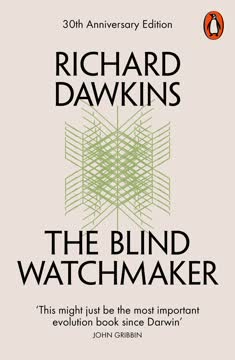
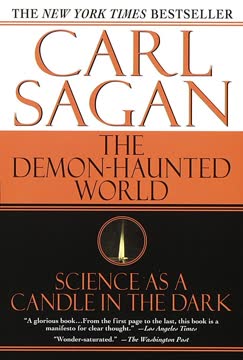
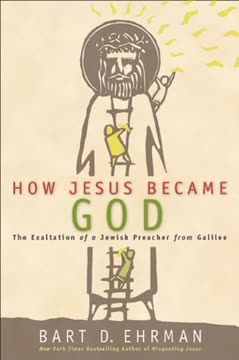
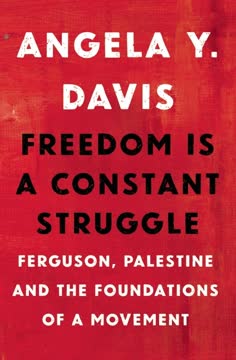
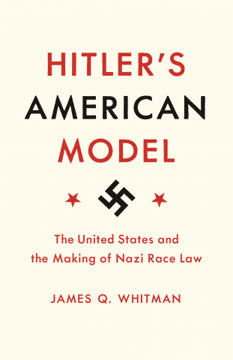
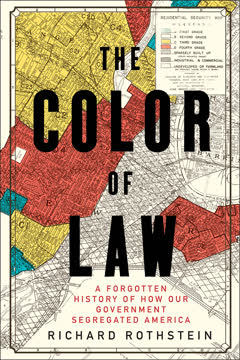
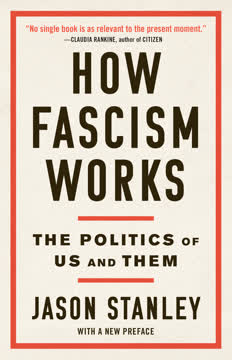



Download PDF
Download EPUB
.epub digital book format is ideal for reading ebooks on phones, tablets, and e-readers.
